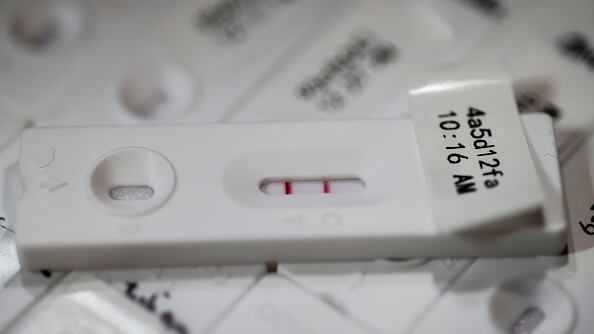JACKSONVILLE, Fla. — Rates of COVID-19 have surged in Florida’s emergency rooms in recent weeks, approaching peaks not seen since the height of last winter’s outbreak, according to new figures from the Centers for Disease Control and Prevention (CDC).
The latest data, updated Friday, shows that the weekly average of COVID-19 patients in Florida’s emergency rooms has risen to 2.64%. This is one of the highest rates in the country during this summer’s wave and is approaching levels not seen since the peak of last winter’s surge.
In addition to emergency room visits, other key metrics in Florida, such as wastewater and nursing home data, have also seen steep increases.
This trend in Florida is similar to recent patterns seen in some western states, which have also experienced a resurgence of the virus.
The CDC highlighted in a bulletin released Wednesday that “over the past few weeks, some surveillance systems have shown small national increases in COVID-19; widespread as well as local surges are possible over the summer months. Although COVID-19 is not the threat it once was, it is still associated with thousands of hospitalizations and hundreds of deaths each week in the United States, and can lead to Long COVID.”
READ: Long COVID remains serious and persistent; more than 200 symptoms identified
Nationwide, most states are now seeing an increase in COVID-19 cases, with many states reporting growth in hospital data. The CDC’s weekly report notes that some areas are experiencing consistent increases in COVID-19 activity, including rises in test positivity and emergency department visits.
“Some areas of the country are experiencing consistent increases in COVID-19 activity, including increases in COVID-19 test positivity and emergency department visits and increases in rates of COVID-19–associated hospitalizations among adults 65+ at several sites,” the CDC said.
While COVID-19 trends remain high across the West, including recent peaks in Hawaii, rates outside Florida and the West remain lower relative to previous peaks. Overall, the CDC describes nationwide COVID-19 activity as “low.”
The agency has been cautious in its recent statements about this year’s summer COVID-19 surge, noting that recent increases follow a period of record low levels of the virus. “This past winter, COVID-19 peaked in early January, declined rapidly in February and March, and by May 2024 was lower than at any point since March 2020,” the CDC said.
Historically, COVID-19 activity has picked up at least twice a year since the pandemic began: once during the summer or early fall after a spring lull, and again in the winter. However, the CDC now states that COVID-19 activity patterns observed are not seasonal and can surge at any time of the year, often driven by new variants.
Currently, the KP.2 and KP.3 variants are the most common nationwide, responsible for more than half of recent cases. Other variants, such as LB.1 and KP.4.1, are also contributing to the current rise.
[SIGN UP: Action News Jax Daily Headlines Newsletter]
Click here to download the free Action News Jax news and weather apps, click here to download the Action News Jax Now app for your smart TV and click here to stream Action News Jax live.












